CFL
Supporting CFL in designing a new generation of mobile experience, focused on multimodality, accessibility, and real-time information for all travelers.

CFL aimed to redesign its mobile application to meet the evolving expectations of passengers and to strengthen its role as a national leader in public mobility. The new app had to simplify key actions such as route search, ticket purchase, and account access while integrating multimodal options, real-time information, and inclusive accessibility. The challenge was to deliver a prototype that combined innovation, simplicity, and universal usability while aligning with CFL’s digital strategy and operational constraints.
- UX Research
- UX Design
- UI Design & Components
- Design System
- Research Ops
- Digital Accessibility
- User Testing
- Design Ops
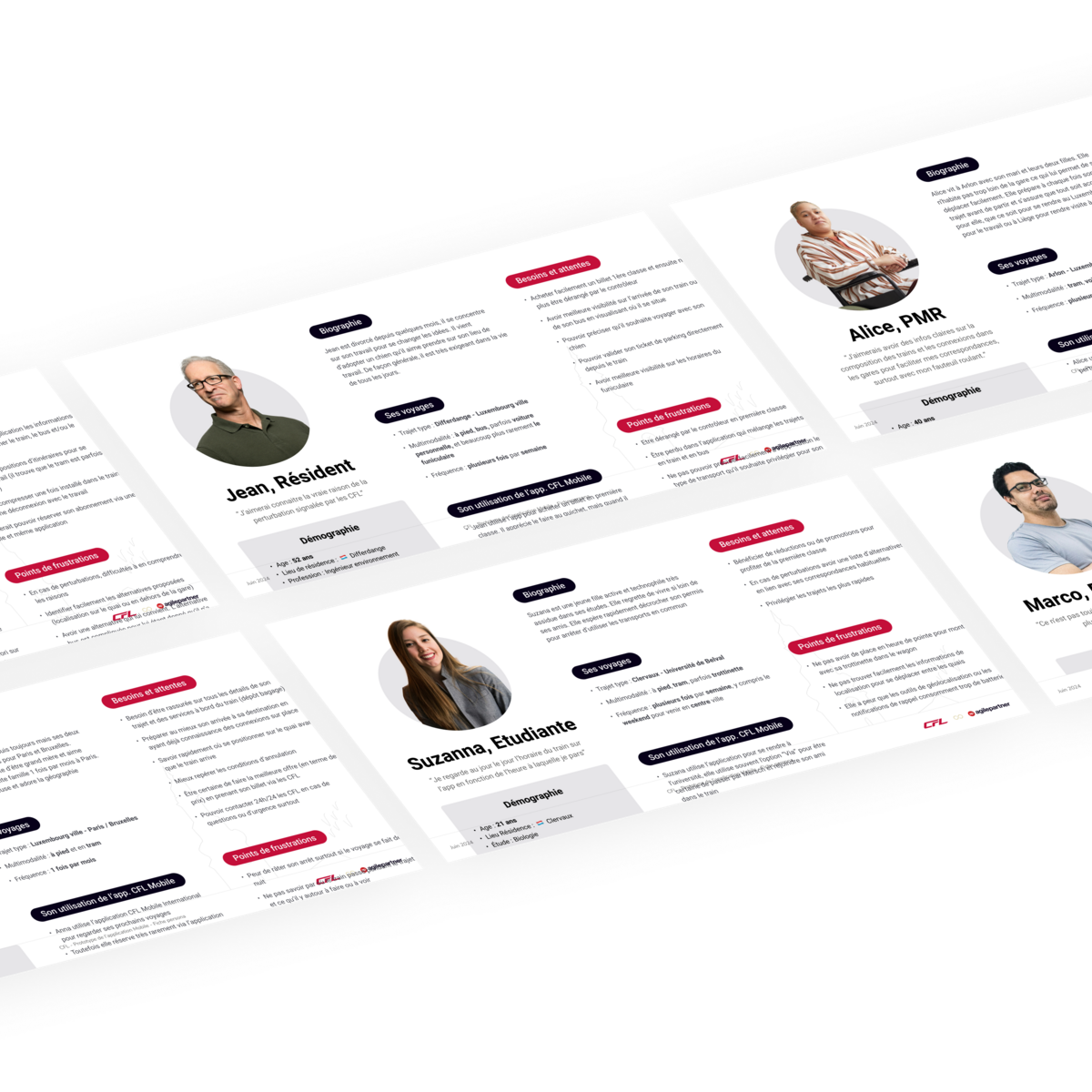
Research and Exploration
The project began with an in-depth research phase combining quantitative and qualitative methods. A large-scale survey gathered thousands of insights on usage habits, expectations, and frustrations. These findings were complemented by user interviews, field shadowing of CFL agents, and analysis of app reviews to understand the full passenger experience.
This exploration phase identified the main pain points across the journey, from route planning to post-travel feedback. Personas and “As-Is” customer journeys were consolidated in a Research Repository hosted on Notion, providing a living knowledge base accessible to all project stakeholders. This foundation ensured that each design decision was grounded in real user needs and operational realities.
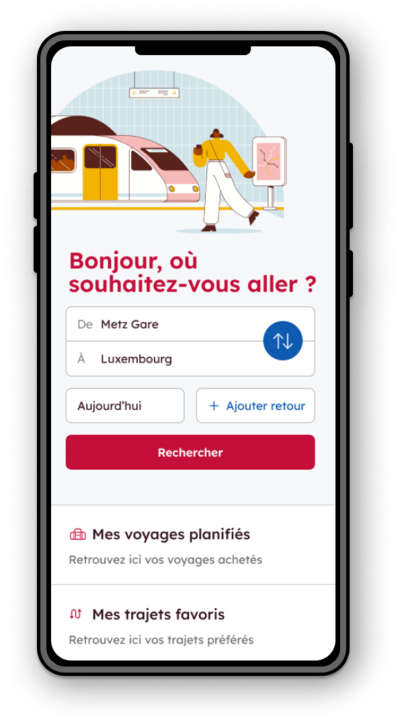
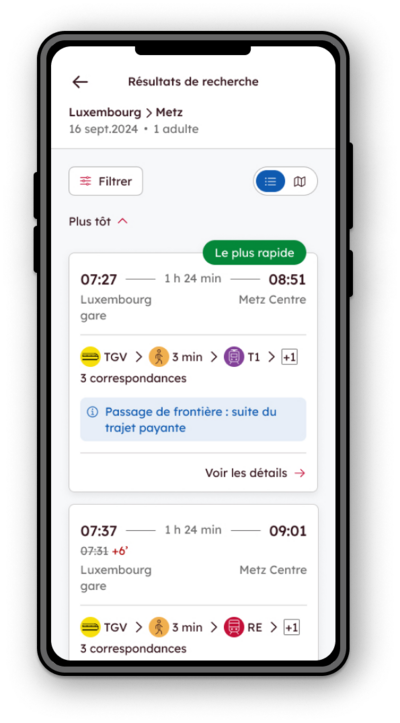
Co-Design and Ideation Workshops
Agile Partner led a series of five co-creation workshops involving CFL teams, end-users, and accessibility experts. Each session focused on a key theme: itinerary search, real-time information, notifications, ticketing, and the MyCFL space. Through ideation techniques such as storyboarding, voting, and group synthesis, participants designed ideal experiences that would shape the future application.
The outcome was a prioritized list of features, validated through an impact–effort matrix, ensuring technical feasibility and user value alignment. Accessibility was a central focus throughout, with the active participation of seniors, people with disabilities, and younger commuters, ensuring the app meets the needs of all travelers.
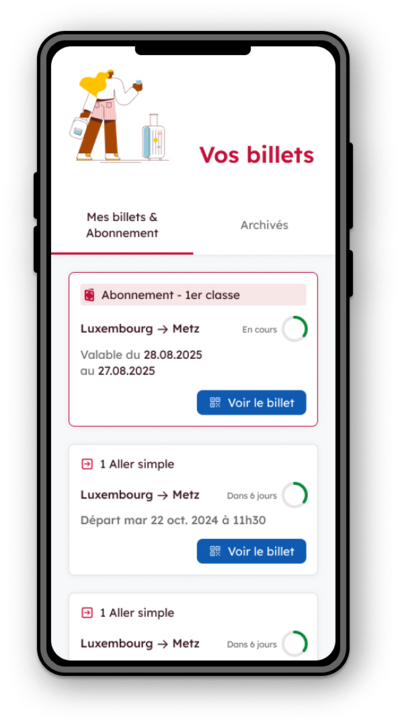
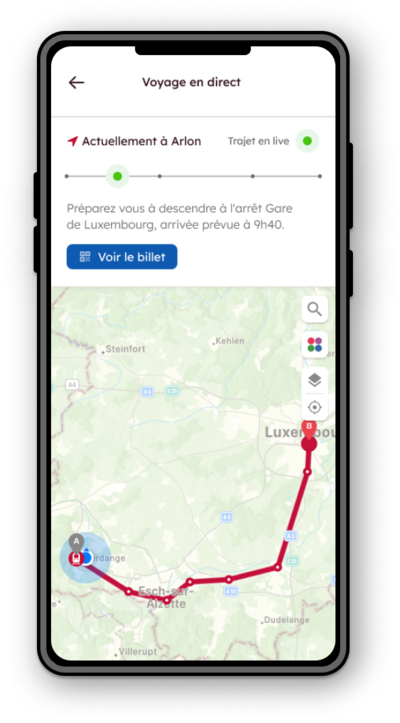
Prototyping and User Testing
The design phase produced high-fidelity mockups and interactive prototypes in Figma, enriched with detailed accessibility annotations and linked component libraries. These prototypes simulated realistic user flows, including degraded contexts such as delays or route disruptions.
User tests were conducted in two iterations, both on-site and remotely via Odaptos, involving a diverse panel of users (Luxembourgish commuters, cross-border travelers, first-class passengers, and international users). Feedback from these sessions was analyzed and used to refine interactions, improve clarity, and ensure that the final prototype delivered a seamless and inclusive experience.
“Agile Partner supported us with both rigor and creativity during the research and design phases of our future mobile app, contributing to a clearer understanding of traveller needs and operational constraints.”
Luce Drouet UX Researcher - CFL